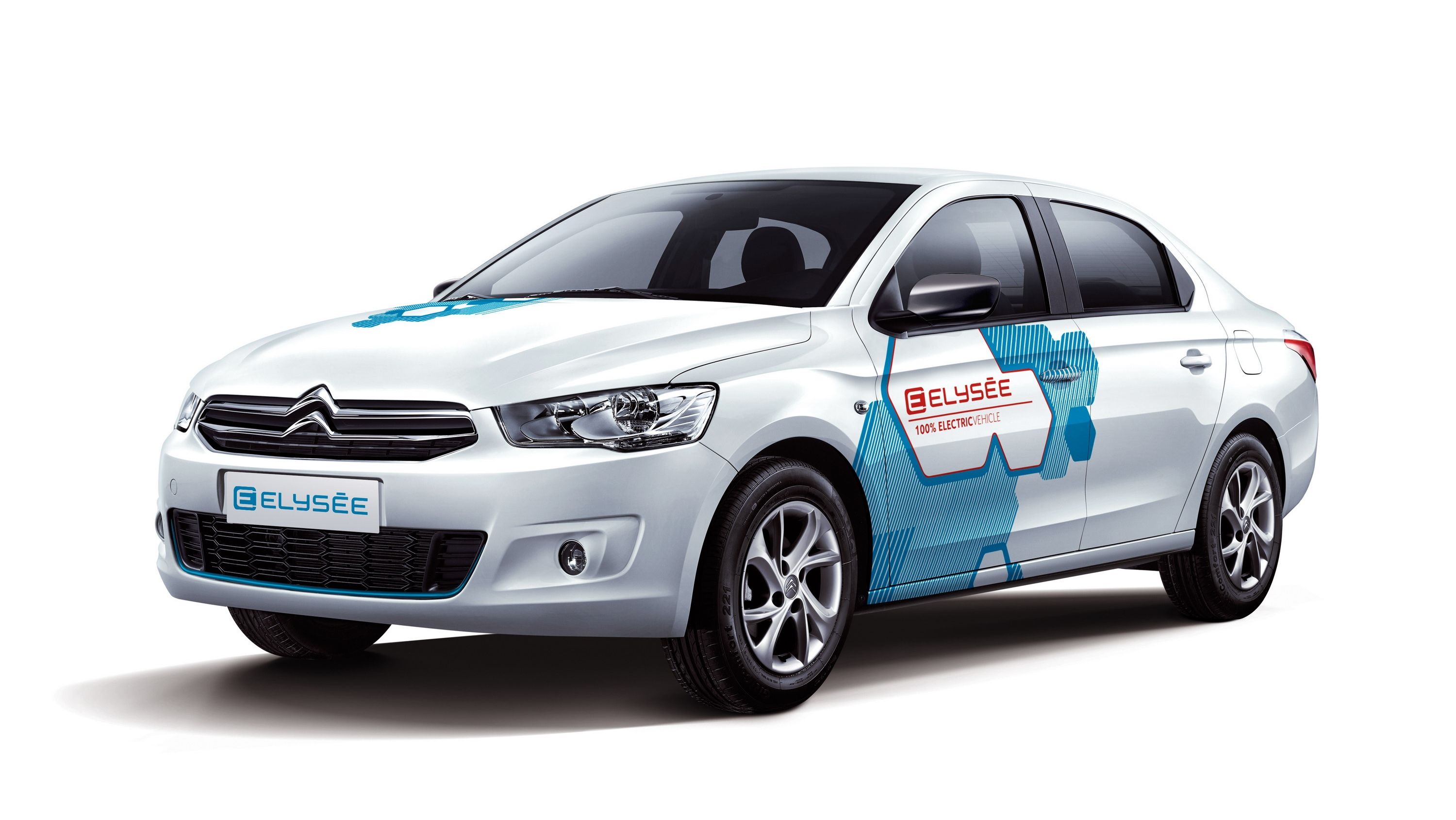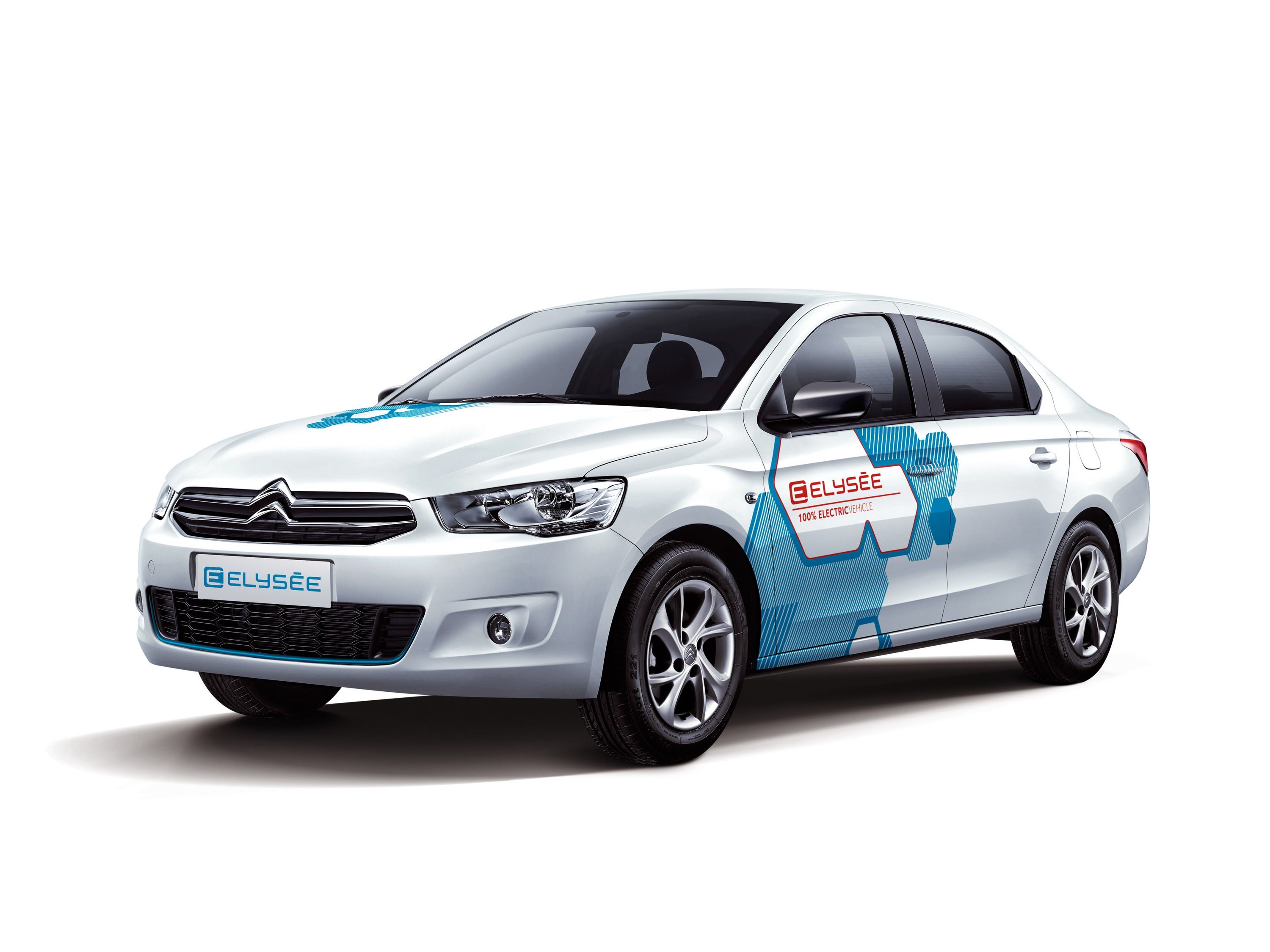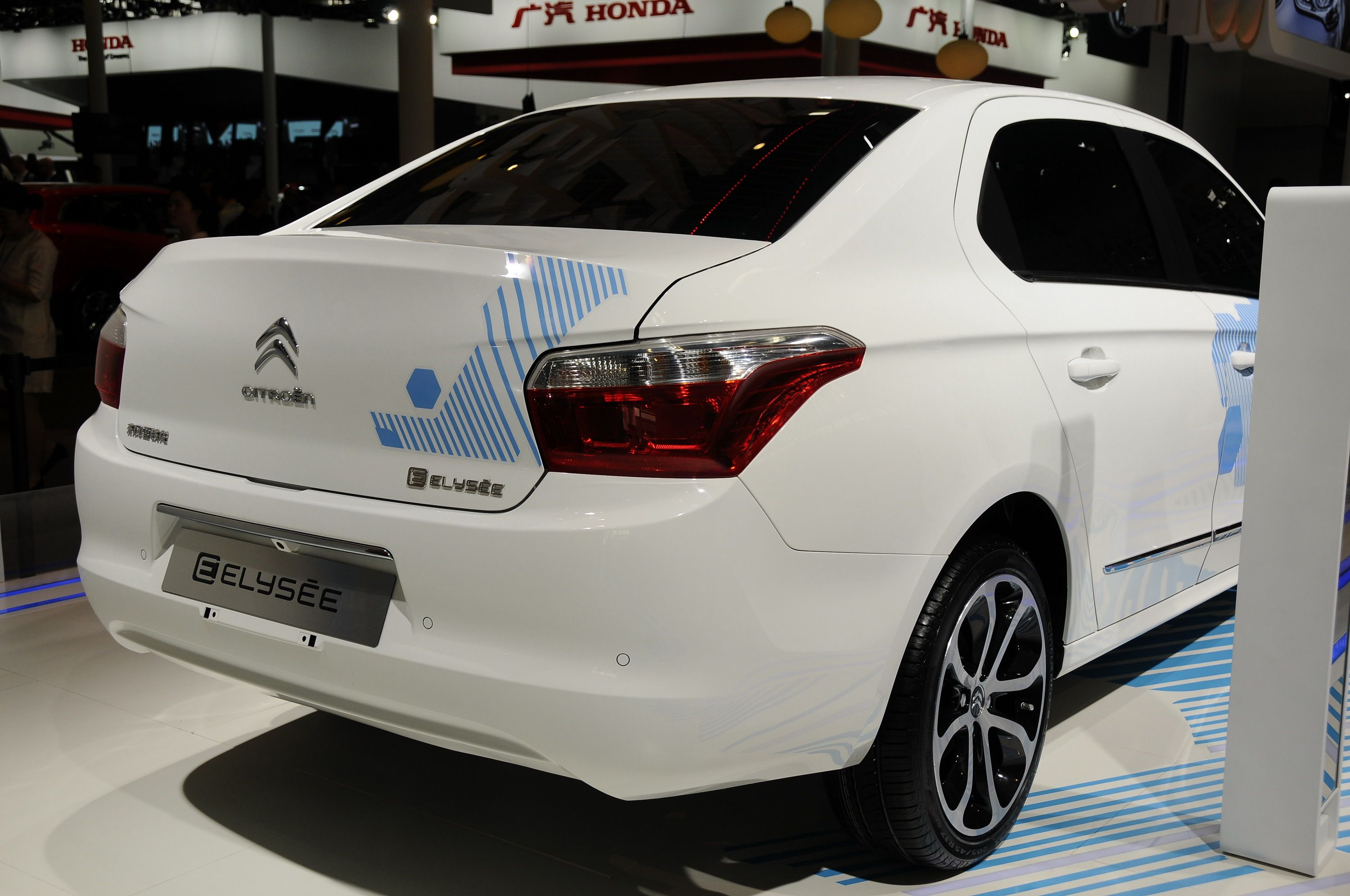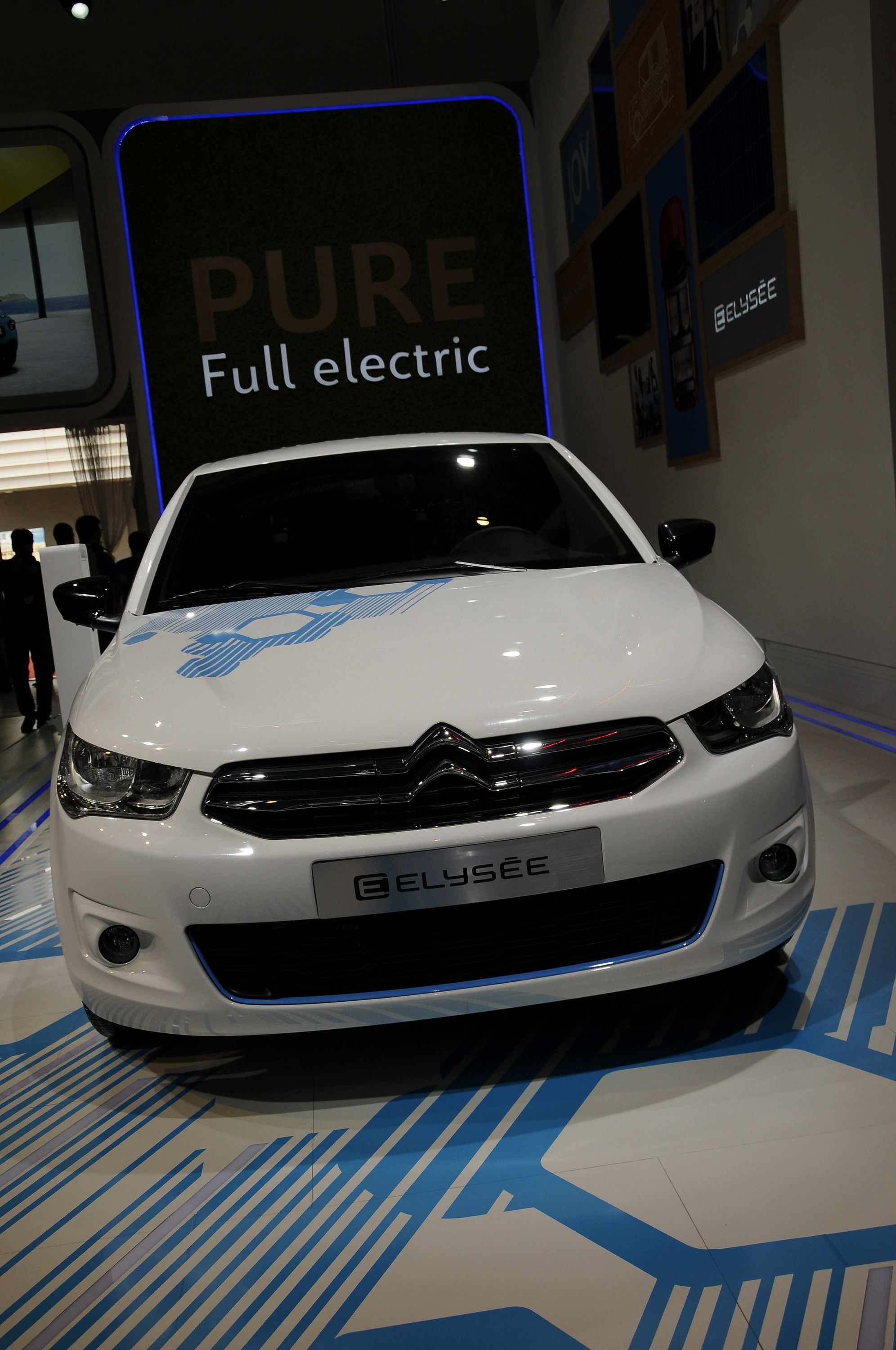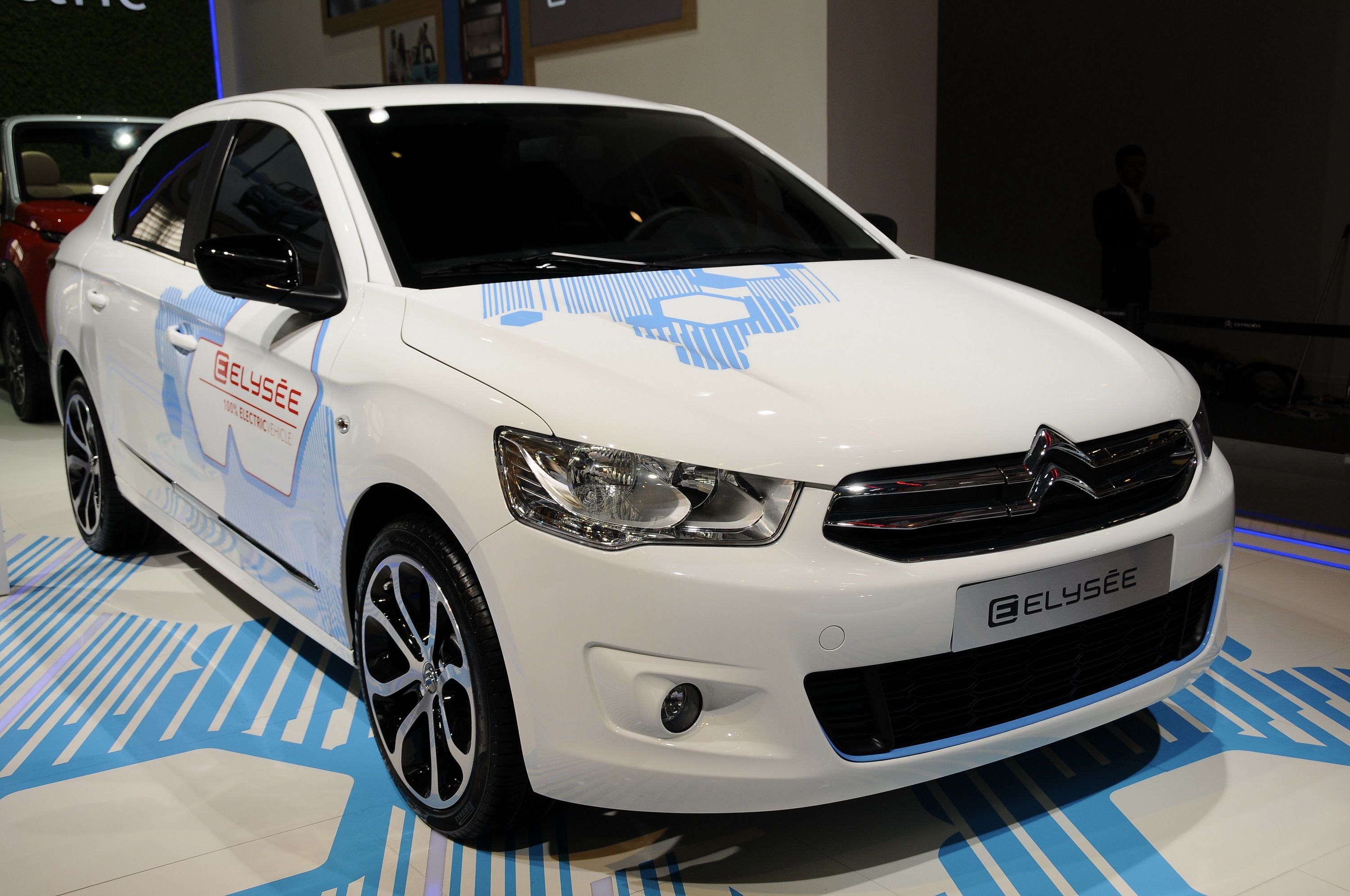Launched in 2013, the C-Elysee->ke3142 replaced the Elysee, a small family sedan->ke142 produced for the Chinese market by the Dongfeng-Citroen joint venture. The second-gen model is strongly related to the Peugeot 301->ke4021 and shares its PSA PF1 platform with the Citroen C3->ke2525 and DS3. But, unlike its predecessor, the C-Elysee is also built outside China and sold in certain markets in Europe and North Africa. While the compact isn't particularly popular in these markets, it enjoys significantly more success in China, where it was Citroen'->ke22s best-selling vehicle in 2015 with 90,000 units sold. As a result, the French are looking to build on the momentum and expand the C-Elysee range in the world's largest market.
Previously available with gasoline and diesel four-cylinder engines, the C-Elysee will soon go on sale with an all-electric drivetrain. The new powertrain will also bring a new name, with the electric sedan->ke1030 to be called the E-Elysee.
The upcoming sedan is part of Donfeng-Citroen's ambitions to become a key player in the Chinese electric car market and joins the recently unveiled E-Mehari. But, unlike the four-seater cabriolet,->ke144 the E-Elysee will offer enhanced practicality and a longer range.
Details about the E-Elysee are still scant as of his writing, but Citroen should unveil more data closer to the vehicle's launch in 2017. Meanwhile, let's have a closer look at what we already know about the sedan.
Continue reading to learn more about the Citroen E-Elysee.
2016 Citroen E-Elysee
- Make: Array
- Model: 2016 Citroen E-Elysee
- [do not use] Vehicle Model: Array
Exterior
Much like all internal combustion-engined cars that receive an electric drivetrain, the E-Elysee is almost identical to the C-Elysee it is based on. Features that set it apart from the gasoline model are tough to spot, but include new wheels and the "E-Elysee" badge on the trunk lid. Other than that, the electric sedan is basically the C-Elysee that Citroen launched in 2013. And don't let the presentation livery fool you, the production cars will share the same color palette with the C-Elysee.
Albeit far from spectacular by design, the E-Elysee sports a modern appearance and is still recognizable as a Citroen despite the company having introduced an updated styling language on newer vehicles. It's 4,430 mm (174.4 inches) long, 1,700 mm (66.9 inches) wide, and 1,470 mm (57.8 inches) tall, which places it in the compact four-door segment alongside affordable cars such as the Kia Rio and Hyundai Accent. Its 2,650-mm (104.3-inch) wheelbase is the longest in its category.
Interior
Photos and details of the E-Elysee's interior aren't yet available, but it's safe to assume that the cabin is identical to the C-Elysee. The only notable difference should be in the small display in the instrument cluster, which will provide data about the car's electric drivetrain. Other than that, expect the E-Elysee to feature a simple cabin with the same dashboard layout as the C-Elysee, with a pair of trapezoidal A/C vents atop the radio display and numerous buttons bellow. Although the C-Elysee is far from being a premium vehicle, the interior is pleasant to look at and the plastics are better than you'd expect in this price range.
This should also apply to the E-Elysee.
Standard features should include a CD/MP3 stereo, USB/AUX ports, cloth upholstery, manual side mirrors, manual air conditioning, ABS with emergency brake-assist system, and two airbags. The options list should offer, Bluetooth, electric mirrors, power windows, single-zone automatic A/C, and rear parking sensors.
Citroen could opt for the base E-Elysee to carry more standard features than its corresponding C-Elysee model, but we will find out more about that when the official specs are out.
Drivetrain
We don't know much about the E-Elysee's drivetrain, but we do know that it gets its juice from a lithium-ion battery. Based on this fact alone, the E-Elysee's drivetrain is not related to the E-Mehari, which uses a lithium-polymer battery to power its electric motors. While motor details remain a mystery, we do know that the sedan will have a range of up to 250 km (155 miles) on a single charge, about 50 km (31 mph) more than the E-Mehari. The battery will take 6.5 hours to charge in normal mode and only 30 minutes to replenish in fast-charging conditions. There is no word on performance yet, but the E-Elysee should be able to hit a top speed of 90 mph and reach 60 mph from a standing start in less than 12 seconds.
Prices
Pricing information is not available as of this writing, but the E-Elysee should be more expensive than the C-Elysee it is based on. The latter starts from CNY83,800 and fetches up to CNY118,800 (about $12,900 to $18,300), so it's safe to assume that the E-Elysee will cost at least CNY100,000 ($15,400). If my estimate proves to be correct, the E-Elysee will be one of the most affordable electric cars in the world. Unfortunately, the sedan might not be offered outside China.
Competition
BYD e5
Based on the gasoline-powered BYD Su Rui sedan introduced in 2012, the e5 was launched in 2015 and it's BYD's first mainstream, compact four-door to work on electric power alone. Powered by a 65Ah lithium iron phosphate battery, the E5 can run for up to 220 km (137 miles) on a single charge and hits a top speed of 93 mph. With incentives and subsidies applied, the e5 can be owned for less than CNY140,000 (about $21,560). Although it's significantly more expensive than what the E-Elysee is expected to fetch, the e5 has a better looking interior and provides more room for rear-seat passengers. More recently, BYD launched the more upscale Qin EV300, which features a two-tone interior with high-quality materials, new technology, and an electric motor that runs for 300 km (186 miles) per charge. However, pricing for the Qin EV300 starts from CNY259,800 (about $40,020), which makes it a competitor for the upcoming Tesla Model 3.
Read more about the BYD Qin EV300 here.
Conclusion
Although not many mainstream automakers offer electric cars in China, the country's market is actually packed with EV, most of them made by local manufacturers such as BAIC, Chery, Dongfeng, FAW, and Geely. The lower prices of locally made electric vehicles make it difficult for European or Japanese makers to compete successfully, despite the fact that most of their offerings are developed within joint-ventures with Chinese brands, but the E-Elysee might be affordable enough to make an impact. The fact that the gasoline C-Elysee version is already popular with Chinese customers will most likely help Citroen sell its EV in large numbers. High stickers have always been an issue with products from BMW and Tesla and its great to see that Citroen is stepping in to provide an affordable electric car. All I can hope is that the E-Elysee will be offered beyond the Chinese market in the future.

